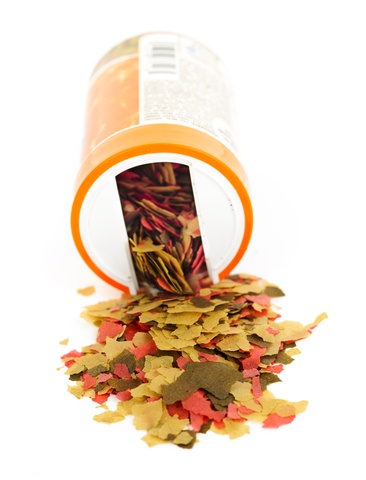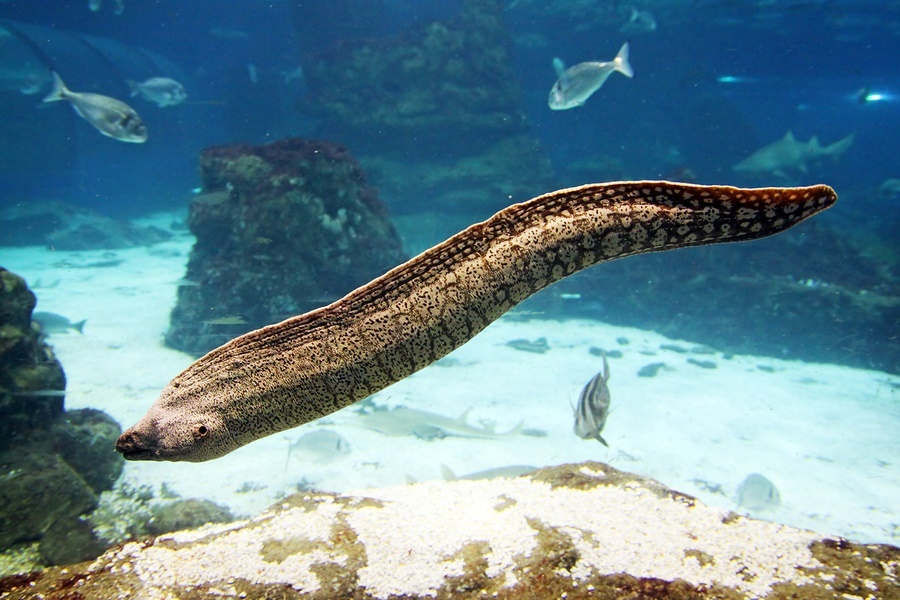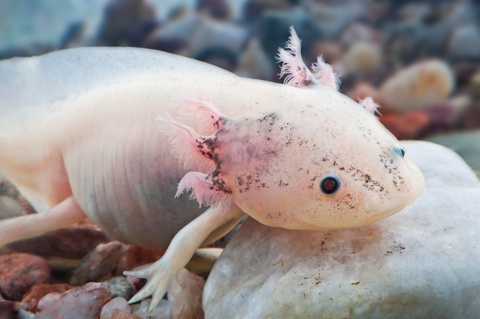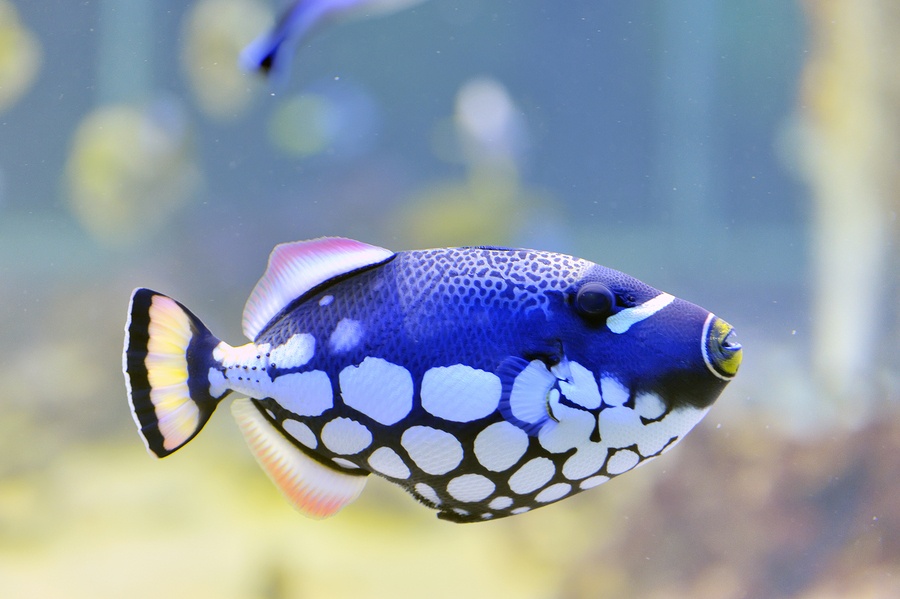Depending on the composition of your tank’s population, you will likely have a combination of carnivores, herbivores, and omnivores. Know your fish and pick your foods accordingly.
Carnivores
Your meat-eating fish need lots of protein in their diet, and they generally like to “hunt” for themselves. You can also use fresh, meaty seafood. For carnivores, you’ll likely be using:
– brine shrimp
– table seafood (scallops, shrimp, mussels)
– glass shrimp
– copepods and amphipods
– feeder fish
– tubificid worms (black worms and red worms)
Because prepared flake or pellet foods create less mess in the tank, these items are always staples in a saltwater aquarist’s “kitchen.” You can also use freeze dried and frozen foods, but be careful. The freezing and drying processes destroy much of the nutritional value.
Herbivores
Fish that eat vegetable matter will also eat meaty seafood in order to meet their protein needs. They tend to like small crustaceans, and may even accidentally consume these creatures while going after the plant matter that is their preferred diet. These items include:
– macroalgae growing in the tank
– macroalgae cultivated in a special grow box called a refugium
– prepared seaweed
There are also prepared flake, pellet, freeze-dried, and frozen foods for your herbivores, and many aquarists will use leafy greens like spinach and kale in their tank. (If you do this, be sure to clean up the leftovers after an hour or so to limit fouling of the water.)
Omnivores
Fortunately, many saltwater fish are omnivores, and will happily feed on a combination of the items listed above. The important thing with any population of fish is to make certain they are getting adequate nutrition and a sufficiently varied diet.





 Author and long-time animal lover. Sharing knowledge on pet care through experience and the written word.
Author and long-time animal lover. Sharing knowledge on pet care through experience and the written word.